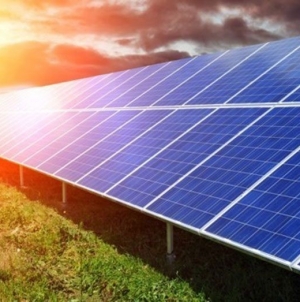Rising debt-to-GDP ratio a matter of concern – financial analyst
Guyana’s debt to Gross Domestic Product (GDP) ratio has been increasing under the current Administration and according to a financial analyst, Guyana’s rising debt should be cause for concern, when oil money may have to be diverted away from the people to paper the cracks.
In an interview with this publication, analyst and Chartered Accountant Sase Singh noted that the projected increase of debt to 55.5 per cent of GDP, despite years of warnings from the International Monetary Fund (IMF) to settle this figure, does not bode well for the future.
A recent report from the IMF had identified Guyana as a country with one of the highest debt-to-GDP ratios in the hemisphere. Singh noted that with debt being added from Bank of Guyana overdrafts to National Industrial and Commercial Investments Limited (NICIL) bonds, it’s not surprising.
“It’s an abnormal increase. It is a problem. What we know is, there has been a rapid increase in our debt over the last few years. And I can name two portions of debt that are really concerning. One is the almost US$300 million in overdrafts at the Bank of Guyana,” Singh told this publication.
The IMF, he added, “had recommended that we urgently settle this. And it’s now 2019 and we haven’t settled it. There is also a public debt of US$145 million for the loan issued to NICIL to restructure Guyana Sugar Corporation (GuySuCo). So between the two of them alone, over US$400 million has been bolted to our debt.”
Singh noted that it will take a lot of oil money to fill these gaps left by debt. This money, he pointed out, already has to compete with Guyana’s infrastructural and social needs and to use it for settling debt can leave little for the people.
“When the oil funds come, it has to go towards paying some of these hefty debts. It has to go towards restructuring some of the underperforming sectors in the economy. It has to go towards bolstering the public infrastructure deficit in the country.”
“So while they’re counting on this oil money for so many things, [little] will be left for the people. Because so much clean-up operations have to be done upon the assumption of office of the new Government, whoever is the new Government. The next two years will basically deny Guyana the policy space it deserves to think expansion.”
By comparing what a country owes with what it produces, the debt-to-GDP ratio indicates its ability to pay back its debts. A high debt-to-GDP ratio may make it more difficult for a country to pay external debts, and may lead creditors to seek higher interest rates when lending.
The higher the debt-to-GDP ratio, the less likely the country will pay back its debt and the higher its risk of default. A specific debt-to-GDP ratio demonstrates an ideal position has not been agreed to, but instead, it is typically focused on the sustainability of certain debt levels.
Previous Administration vs Govt
In Guyana’s case, while debt-to-GDP has seen slight increases over the years, this number continues to grow, and local economists have warned that Guyana’s increased debt could complicate things.
According to calculations from financial analyst Joel Baghwandin, the external debt to net foreign asset ratio has doubled from 2009 to now. External debt increased from US$933 million in 2009 to US$1.3 billion in 2018.
Foreign assets, meanwhile, went from US$751 million in 2013 to US$528 million in 2018.
Data indicates that when the ratio between these two indicators is calculated, it increased from 163 per cent in 2009 to 247 per cent in 2018.
The recent IMF report shows that compared with most countries in the hemisphere, Guyana’s external debt compared to foreign reserves is among the highest.
The IMF report in question is the Regional Economic Outlook of 2019 for the Western Hemisphere.
While the report notes that Guyana’s economy will grow when first oil arrives, the country currently does not compare well with others in terms of external debt and its reserves.
Guyana, according to the report, is expected to record a public sector gross debt-to-GDP percentage of 55.5 per cent for the year 2019, although the IMF estimates that this will subsequently be reduced to 24.6 per cent.
Out of 22 countries examined by the IMF, it found that Guyana had the second-highest external financing requirements for public and private. And when compared with Guyana, 17 other countries have more foreign reserves than they do debt.






















